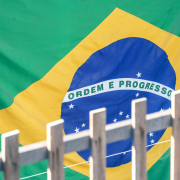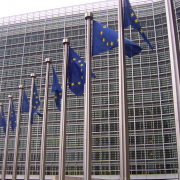According to the ‘2017 European Union report on pesticide residues in food’ published by European Food Safety Authority (EFSA), 95.9% of the 88,247 food product samples analysed fell within the legal limits of pesticide residues (84,627, samples). In 54.1% of the tested samples, no quantifiable residues were reported (residue levels below the limit of quantification (LOQ)), while 41.8% of the samples analysed contained quantified residues at or below the maximum residue levels (MRLs). The dietary risk assessment indicated that, for the samples analysed, the probability of European citizens being exposed to pesticide residue levels that could lead to negative health outcomes is low. Based on the analysis of the 2017 results, EFSA derived several recommendations to increase the efficiency of the European control systems to ensure a continuing high level of consumer protection.
This report provides an overview of the 2017 official control activities on pesticide residues carried out in the European Union (EU) Member States, Iceland and Norway. It summarises the results of both the 2017 EU‐coordinated control programme (EUCP) and the national control programmes (NP). While the NPs are mostly risk based (so called enforcement samples) focusing on pesticides or products originating from countries where a number of exceedances have been observed in the past, the EUCP aims to present a statistically representative snapshot of the situation of pesticide residues in food products that are mostly consumed in the EU following a random sampling procedure. The report includes the outcome of a dietary risk assessment based on the results of the overall 2017 control programmes.
The comprehensive analysis of the results of all reporting countries provides risk managers with a sound‐based evidence for designing future monitoring programmes, in particular for taking decisions on which pesticides and food products should be targeted in risk‐based national programmes.
EU‐coordinated programme (EUCP)
To allow the assessment of representative consumer exposure to pesticide residues by food commodity, the same pattern of commodities is monitored for the presence of pesticides residues in 3‐year cycles. Regarding the 2017 EUCP, results were compared with the ones of 2014 for those commodities sampled in both years.
In 2017 EUCP, 12 food products were considered: oranges, pears, kiwi fruits, cauliflowers, onions, carrots, potatoes, beans (dried), rye grain, husked rice grain, poultry fat and sheep fat. Kiwi fruits, onions and dried beans were included in the programme for the first time, so no comparison with results of 2014 was possible for these three food products. The samples taken were analysed for 171 pesticides; 149 of those in food of plant origin, 8 in food of animal origin and 14 in both food of plant and animal origin.
Of the 11,158 samples analysed in these food commodities:
• 7,236 or 64.9% were found to be without quantifiable levels of residues (residues < LOQ).
• 3,743 or 33.5% contained one or more pesticide residues in concentrations below or equal to the legally permitted maximum residue levels (MRLs).
• 179 or 1.6% contained residue concentrations exceeding the legally permitted MRLs. Among these, 80 or 0.7% of the total samples were considered non‐compliant, when also considering the measurement uncertainty.
For products of plant origin, the highest MRL exceedance rates were identified for pesticide residues found in rice and pears followed by dried beans, carrots, rye, kiwi fruits, potatoes, oranges, cauliflower and onions.
Of the 28 MRL exceedances reported for pears in 2017, 4 of them were originated from third countries, the rest being of EU origin. Noteworthy MRL exceedances were reported for chlormequat, ethephon, chlorpyrifos and propiconazole.
For rice, MRL exceedances were recorded in 48 samples, 28 of which originated from South‐East Asia, most of them from India (21). Twenty‐three of the MRL exceedances in rice were reported for carbendazim (RD).1 Among the 39 pesticides with residue levels at or above the LOQ, the ones most frequently quantified were isoprothiolane (quantified in 12.1% of the tested samples) and bromide ion (quantified in 10.1% of the tested samples).
Pesticides not approved in the EU should not be found in samples grown in the EU. However, these can be used in third countries as long as they do not exceed the legal limit when entering the EU market. Among commodities of plant origin, the following non‐EU‐approved pesticides were found in samples produced in the EU: dieldrin (RD), parathion‐methyl (RD), and procymidone (RD) in carrots, dicloran in onions, fenthion (RD), methidathion and profenofos in oranges, permethrin in pears, clothianidin in potatoes, biphenyl and carbendazim (RD) in dried beans, carbendazim (RD), permethrin and dichlorvos in rice and permethrin in rye. Whereas, in samples originating from third countries, the following pesticides exceeded the legal limits: methidathion in kiwi fruits, chlorfenapyr, methidathion and profenofos in oranges, carbaryl and diazinon in dried beans, acephate, carbendazim (RD), hexaconazole, methamidophos and triazophos, in rice.
Regarding commodities of animal origin (i.e. poultry fat and sheep fat), the most frequently quantified pesticides were fat‐soluble persistent organic pollutants (dichlorodiphenyltrichloroethane (DDT) (RD) and hexachlorobenzene). Although the persistent organic pollutants (POPs) are prohibited at international level under the Stockholm convention (UNEP, 2001), they are still found in the environment mainly due to their persistence. Apart from an MRL exceedance identified for lindane in one sample of sheep fat, no exceedances were reported in samples of animal origin.
The main findings can be explored by country and food product using EFSA’s specially developed data visualisation tool.
Source: Agropages


